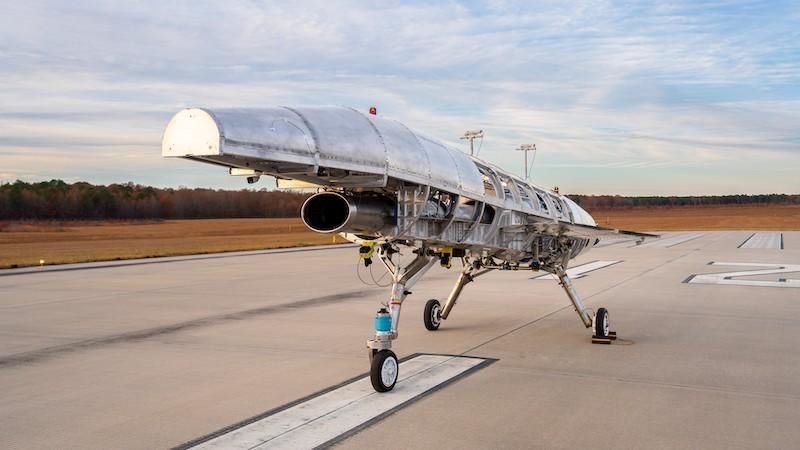Engineers at US-based hypersonic aircraft company Hermeus have completed ground testing the company’s iron bird and have started building its first flight test aircraft.
The Quarterhorse Mk 0 is a fully integrated non-flying prototype that Hermeus calls a “dynamic iron bird”.
Mk 0 is the first of four aircraft in Hermeus’ Quarterhorse development program. Quarterhouse aims to flight test and validate the company’s turbine-based combined cycle (TBCC) propulsion system alongside various design elements, materials and subsystems.
The single-engine Quarterhouse aircraft will precede two other hypersonic aircraft Hermeus is developing, a Mach 5-capable (more than 3,000mph) 20-seat passenger aircraft called Halycon and Darkhorse, a smaller autonomous drone for the defense and security market. Hermeus has tentatively said before it plans to fly Halycon before the end of this decade.
The TBCC engine, Chimera, is an air-breathing rocket developed from a GE J85 jet engine core that switches from a turbojet to ramjet mode to achieve more thrust and high speeds. In June last year Hermeus received its first Pratt & Whitney F100 engine, the turbojet engine it plans to use in the second version of Chimera to achieve Mach 5+ speeds.
Iterative and progressive testing
Each aircraft in the Quarterhorse program will progressively increase in complexity. Mk 0 is being used to validate the aircraft’s subsystems.

Hermeus’ first flight vehicle Quarterhorse Mk 1, is being built and is scheduled to fly later this year. It will be capable of remote take-off and landing.
The Mk 2 will be the company’s first aircraft to fly at supersonic speeds, with engineers aiming for it to demonstrate autonomous supersonic flight at speeds up to Mach 3.
The final test vehicle, the Mk 4 will demonstrate Hermeus’ Chimera propulsion system, propelling the aircraft to around Mach 4 during flight and breaking the all-time airspeed record held by the SR-71 Blackbird of Mach 3.4.
Ground testing objectives
The Mk 0 vehicle was designed and constructed within six months, and all test objectives were completed in 37 days. These test objectives included demonstrating remote command and control taxiing and evaluating radio frequency (RF) latency and ground handling qualities of the integrated systems.
Engineers also demonstrated that the proper state of vehicle and flight deck is maintained during a lost link and conducted human factor evaluations and pilot-in-the-loop steering and controls testing.
The ground test campaign took place at the US Air Force’s Arnold Engineering Development Complex (AEDC) in Tullahoma, Tennessee. Hermeus said that conducting the ground test operations on an Air Force base enabled its team to work with Air Force range and regulatory authorities.
Vice president of test at Hermeus Don Kaderbek said, “This was the first time our flight test team had an opportunity to work in a deployed test campaign with external stakeholders. The more the team works together and establishes their rhythm, the smoother flight testing will go.”
AJ Piplica, CEO and co-founder of Hermeus said, “Test campaigns measured in days instead of months or years, represent the pace required to mature hypersonic technology and field transformative aircraft.”
Hermeus, which was founded in 2018, revealed its design for Quarterhorse in 2021,




